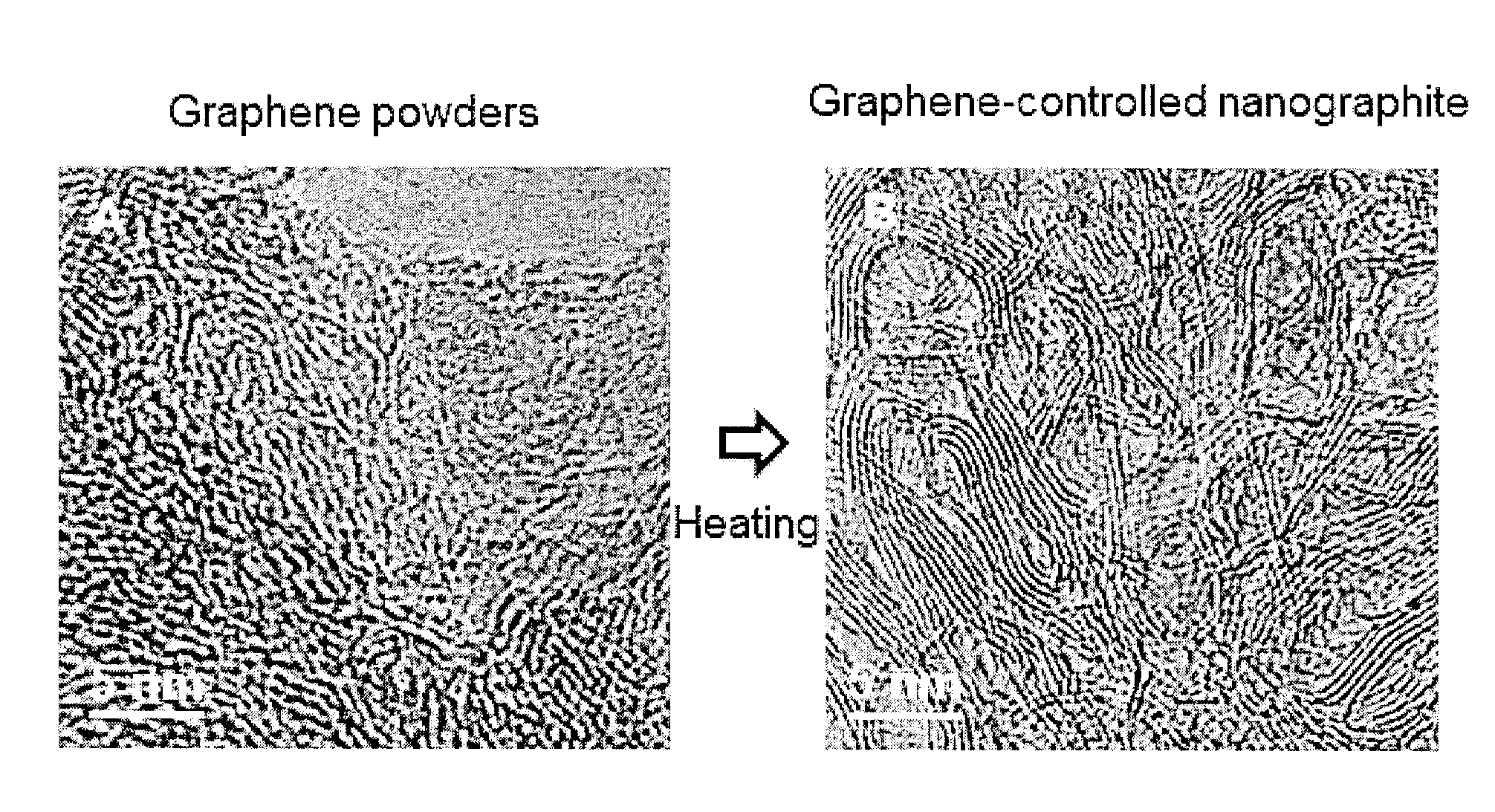Fabrication method of graphene-controlled nano-graphite
- Summary
- Abstract
- Description
- Claims
- Application Information
AI Technical Summary
Benefits of technology
Problems solved by technology
Method used
Image
Examples
example 1
[0021]1 g of graphene (nano-)powder is prepared by disintegrating helical graphite with a mechanical method. The graphene powders show a nano-ribbon shape with width and length of 5 nm or smaller and 10 nm or smaller, respectively. The graphene powders are loaded in a vacuum chamber and heated at 1,500° C. is for 30 minutes. In this case, the temperature was measured by a pyrometer, and may have a deviation of ±50° C. The heat treatment was performed in the conditions of pressure of 100 torr under a hydrogen (inert gas) atmosphere and a gas flow rate of 200 sccm. HRTEM images shown in FIGS. 1A and B confirm that the graphene nano-powders converted into crystalline graphite (graphene-controlled nano-graphite)by the heat treatment. The graphene-controlled nano-graphite is expected to have a thickness of a few nm or thinner (approximately, ten or smaller of the graphene layers having a thickness of about 20 nm or thinner) and a length of tens of nm (10 to 100 nm).
[0022]FIG. 2 shows XRD...
examples 2-1 to 2-4
[0023]In order to check a lower boundary of the temperature range for the heat treatment at which the graphene nano-powder converts into the graphene-controlled nano-graphite. Temperatures were changed between 1300 and 1500° C. in Examples 2-1 to 2-4, and heat-treated samples were analyzed by HRTEM and XRD. Here, the graghene nano-powders samples and the conditions for the heat treatment were the same with those of Example 1. The results are shown in Table 1.
[0024]An average thickness of the graphene-controlled nano-graphite having a ribbon shape fabricated under the conditions of Examples 2-1 to 2-4 was 10 nm or thinner (occasionally, some were observed to have a thickness of 20 nm).
[0025]It has been well-known that graphite is stable at a high temperature of 3,000° C. or lower and crystalline thereof is enhanced toward higher temperature. Thus, the upper boundary of the temperature range may be 3,000° C. As shown in Table 1 below, it appeared that morphological change was complete...
PUM
 Login to View More
Login to View More Abstract
Description
Claims
Application Information
 Login to View More
Login to View More - R&D
- Intellectual Property
- Life Sciences
- Materials
- Tech Scout
- Unparalleled Data Quality
- Higher Quality Content
- 60% Fewer Hallucinations
Browse by: Latest US Patents, China's latest patents, Technical Efficacy Thesaurus, Application Domain, Technology Topic, Popular Technical Reports.
© 2025 PatSnap. All rights reserved.Legal|Privacy policy|Modern Slavery Act Transparency Statement|Sitemap|About US| Contact US: help@patsnap.com



